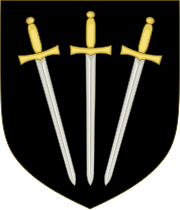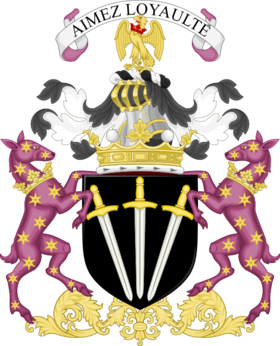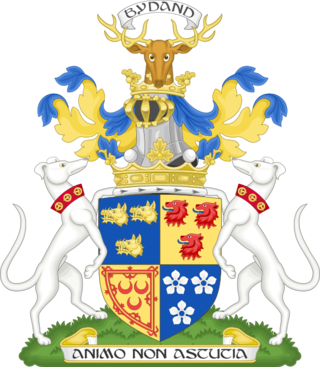
Marquess of Huntly is a title in the Peerage of Scotland that was created on 17 April 1599 for George Gordon, 6th Earl of Huntly. It is the oldest existing marquessate in Scotland, and the second-oldest in the British Isles; only the English marquessate of Winchester is older. The Marquess holds the following subsidiary titles: Lord Gordon of Strathaven and Glenlivet and Earl of Aboyne, and Baron Meldrum, of Morven in the County of Aberdeen.

Charles Paulet, 2nd Duke of Bolton was Lord Lieutenant of Ireland, Member of Parliament for Hampshire and a supporter of William III of Orange.
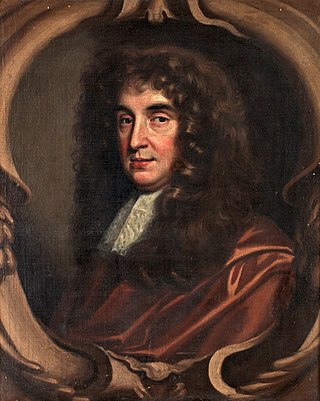
Charles Paulet, 1st Duke of Bolton, was an English nobleman, the son of John Paulet, 5th Marquess of Winchester, and his first wife, Jane Savage.

Earl of Lindsey is a title in the Peerage of England. It was created in 1626 for the 14th Baron Willoughby de Eresby. He was First Lord of the Admiralty from 1635 to 1636 and also established his claim in right of his mother to the hereditary office of Lord Great Chamberlain of England. Lord Lindsey fought on the Royalist side in the Civil War and was mortally wounded at the Battle of Edgehill on 23 October 1642. He was succeeded by his son, the second earl. He also fought at Edgehill and surrendered to the Parliamentarians in order to attend his mortally wounded father. Lord Lindsey later fought at the First Battle of Newbury, Second Battle of Newbury, and at Naseby. His son from his second marriage, James, was created Earl of Abingdon in 1682. He was succeeded by his son from his first marriage to Martha Cockayne, the third Earl. He represented Boston in the House of Commons and served as Lord Lieutenant of Lincolnshire.

Earl of Cardigan is a title in the Peerage of England, currently held by the Marquesses of Ailesbury, and used as a courtesy title by the heir apparent to that Marquessate, currently David Brudenell-Bruce, Earl of Cardigan, son of the 8th Marquess. The Brudenell family descends from Sir Robert Brudenell, Chief Justice of the Common Pleas from 1520 to 1530. His great-grandson, Sir Thomas Brudenell, was created a Baronet in the Baronetage of England, styled "of Deene in the County of Northampton", on 29 June 1611. On 26 February 1628, he was raised to the Peerage of England as Baron Brudenell, of Stanton Wyvill in the County of Leicester, and on 20 April 1661 he was further honoured when he was made Earl of Cardigan, also in the Peerage of England. On his death, the titles passed to his son, Robert, the 2nd Earl, and on the 2nd Earl's death to his grandson, George, the 3rd Earl, the 2nd Earl's only son, Francis, Lord Brudenell, having predeceased his father.
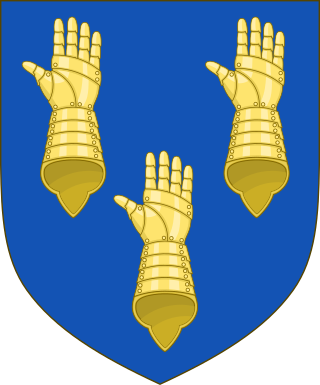
Baron Barnard, of Barnard Castle in the Bishopric of Durham, is a title in the Peerage of England. It was created in 1698 for Christopher Vane, who had previously served as a member of parliament for County Durham and Boroughbridge. Vane was the son of Sir Henry Vane the Younger and grandson of Sir Henry Vane the Elder. His grandson, the third Baron, notably served as Paymaster of the Forces and as Lord Lieutenant of County Durham. In 1754 he was created Viscount Barnard and Earl of Darlington, both in the County Palatine of Durham. Lord Darlington was the husband of Lady Grace FitzRoy, daughter of Charles FitzRoy, 2nd Duke of Cleveland, the illegitimate son of King Charles II by his mistress Barbara Villiers, 1st Duchess of Cleveland.

Baron Bolton, of Bolton Castle in the County of York, is a title in the Peerage of Great Britain. It was created in 1797 for the Tory politician Thomas Orde-Powlett, who had previously served as Chief Secretary for Ireland. Born Thomas Orde, he was the husband of Jean Mary Browne-Powlett, illegitimate daughter of Charles Powlett, 5th Duke of Bolton, who had entailed the greater part of his extensive estates to her in default of male issue of his younger brother Harry Powlett, 6th Duke of Bolton.

William Paulet, 1st Marquess of Winchester, styled Lord St John between 1539 and 1550 and Earl of Wiltshire between 1550 and 1551, was an English Lord High Treasurer, Lord Keeper of the Great Seal, and statesman.
Paulet, variant spelling Powlett, is a surname. Notable people with the surname include:
This is a list of people who have served as Lord Lieutenant of Hampshire. Since 1688, all the Lords Lieutenant have also been Custos Rotulorum of Hampshire. From 1889 until 1959, the administrative county was named the County of Southampton.
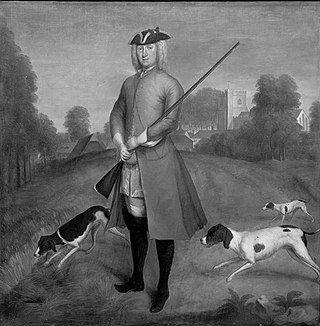
Charles Powlett, 3rd Duke of Bolton, styled Earl of Wiltshire from 1685 until 1699, and Marquess of Winchester from 1699 until 1722, was a British landowner and Whig politician who sat in the English House of Commons from 1705 to 1708 and in the British House of Commons between 1708 and 1717, when he was raised to the peerage as Lord Powlett and sat in the House of Lords.
Lord William Powlett was an English Member of Parliament.
Charles Ingoldsby Burroughs-Paulet, 13th Marquess of Winchester PC was a British peer and courtier, styled Earl of Wiltshire from 1794 until 1800.

Lieutenant-general Charles Powlett, 5th Duke of Bolton,, styled Marquess of Winchester from 1754 to 1759, was a British soldier, nobleman and Whig politician.
Harry Powlett, 4th Duke of Bolton PC, known until 1754 as Lord Harry Powlett, was a British nobleman and Whig politician. He sat in the House of Commons from 1715 to 1754, when he took his seat in the House of Lords.
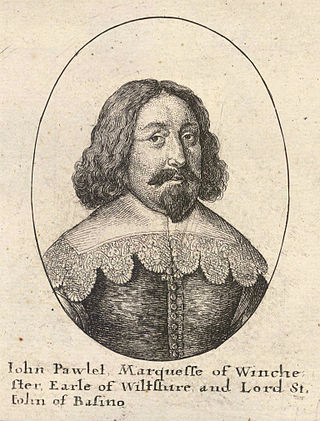
John Paulet, 5th Marquess of Winchester, styled Lord John Paulet until 1621 and Lord St John from 1621 to 1628, was the third but eldest surviving son of William Paulet and his successor as 5th Marquess of Winchester.

John Paulet, 2nd Marquess of Winchester, styled The Honourable John Paulet between 1539 and 1550, Lord St John between 1550 and 1551 and Earl of Wiltshire between 1551 and 1555, was an English peer. He was the eldest son of William Paulet, 1st Marquess of Winchester and Elizabeth Capel.
George Paulet, 12th Marquess of Winchester, known as George Paulet or Powlett until 1794, was an English courtier and nobleman.

John Paulet, 14th Marquess of Winchester, styled Earl of Wiltshire until 1843, was a British peer and soldier.
Mary Paulet, Marchioness of Winchester was the second wife of Charles Paulet, 6th Marquess of Winchester. She was an illegitimate daughter of Emanuel Scrope, 1st Earl of Sunderland, by his mistress Martha Jeanes, or Janes, or Jones, alias San(d)ford. Although sometimes described as "Duchess of Bolton", she died before her husband was created a duke. Her son Charles succeeded his father as Duke of Bolton.

